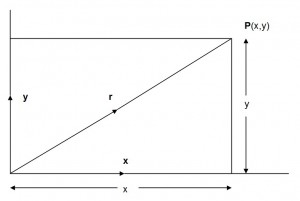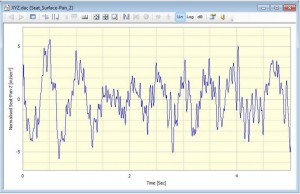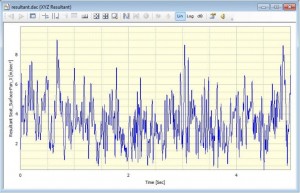When we are dealing with multiple measurements we often need to calculate a resultant vector to understand their combined effect. What do we mean by this? And how do we calculate the resultant vector?
We can distinguish between quantities which have magnitude only and those which have magnitude and are also associated with a direction in space. The former are called scalars, for example, mass and temperature. The latter are called vectors, for example, acceleration, velocity and displacement.
In this article a vector is represented by bold face type. The magnitude of any vector, r, (also called the modulus of r) is denoted by r. The magnitude is a measurement of the size of the vector. The direction component indicates the vector is directed from one location to another. Scalars can be simply added together but vector addition must take into account the directions of the vectors.
Multiple vectors may be added together to produce a resultant vector. This resultant is a single vector whose effect is equivalent to the net combined effect of the set of vectors that were added together.
The use of a frame of reference allows us to describe the location of a point in space in relation to other points. The simplest frame of reference is the rectangular Cartesian coordinate system. It consists of three mutually perpendicular (tri-axial x, y and z) straight lines intersecting at a point O that we call the origin. The lines Ox, Oy and Oz are called the x-axis, y-axis and z-axis respectively.
For convenience consider a two dimensional x,y coordinate system with an x-axis and a y-axis. In this configuration any point P with respect to the origin can be related to these axes by the numbers x and y as shown in Figure 1. These numbers are called the coordinates of point P and represent the perpendicular distances of point P from the axes.

If these two measurements represent vector quantities, for example displacement x and y, measured in the x and y directions respectively then we can use vector addition to combine them into a single resultant vector r as shown in Figure 1. In vector terms
Any vector can be written as where
is a unit vector in the same direction as r. A unit vector is simply a vector with unit magnitude. By convention we assign three unit vectors i, j and k in the directions x, y and z respectively. So we can write
where x is the magnitude of vector x and y is the magnitude of vector y.
Sometimes we are only interested in the magnitude or size of the resultant vector. Looking at Figure 1 we can use Pythagoras’ Theorem to calculate the magnitude of vector r as
In vector terms, the scalar product a.b (also known as the dot product) of two vectors a and b is defined as the product of the magnitudes a and b and the cosine of the angle between vectors a and b. Therefore,
By definition unit vectors have unity magnitude so
and
.
Substituting these values we come to the same formula
The modulus or magnitude, r, of the resultant vector r at point P with coordinates x and y is then given by
This can be extended to a tri-axial (x,y,z) configuration. For example, if we have three measurements x, y and z representing accelerations measured by a tri-axial accelerometer in the x, y and z directions respectively then the resultant vector r is given by
where i, j and k are unit vectors in the x, y and z directions.
The magnitude, r, of the resultant vector is then the net acceleration and is given by
There is a particular module in the DATS software that takes a tri-axial group of signals (three signals) and generates the resultant magnitude as shown below. In this example x, y and z accelerations were captured and analysed to produce the magnitude of the resultant net acceleration.




Dr Mike Donegan
Latest posts by Dr Mike Donegan (see all)
- How Do I Measure Whole Body Vibration? - March 20, 2015
- Sampling and Filtering Data for ISO8041 Compliance and Human Body Vibration Data Weighting - July 10, 2014
- What is Auto Spectral Density? - March 12, 2014




Sorry, not very good with vectors: why the 0.5 in the r=(x2+y2)0.5 and r=(x2+y2+z2)0.5?
Hi Matt,
The 0.5 value is an index indicating raise to the power of 0.5.
If we have r^2 = (x^2 + y^2), where ^2 represents raised to the power 2 (or squared) then
the magnitude r = [(X^2 + y^2)]^0.5 where ^0.5 represents raise to the power 0,5 (square root).
If you sum the squared components then the summed value is a squared component and you must take the square root (raise to the power 0.5) to get back to a linear non-squared value.
Thanks, I realised that about 5 minutes later hahaha. Thanks anyway!
Thanks for article, Could you please shed some light on direction of resultant acceleration?
Can you give me a problem with solutions regarding the component vector in finding the resultant vector. Please
A nice and helpful article… Thank you for your effort…
Greetings from Turkey!
How would you go about calculating resultant acceleration and then viewing it in the frequency domain?